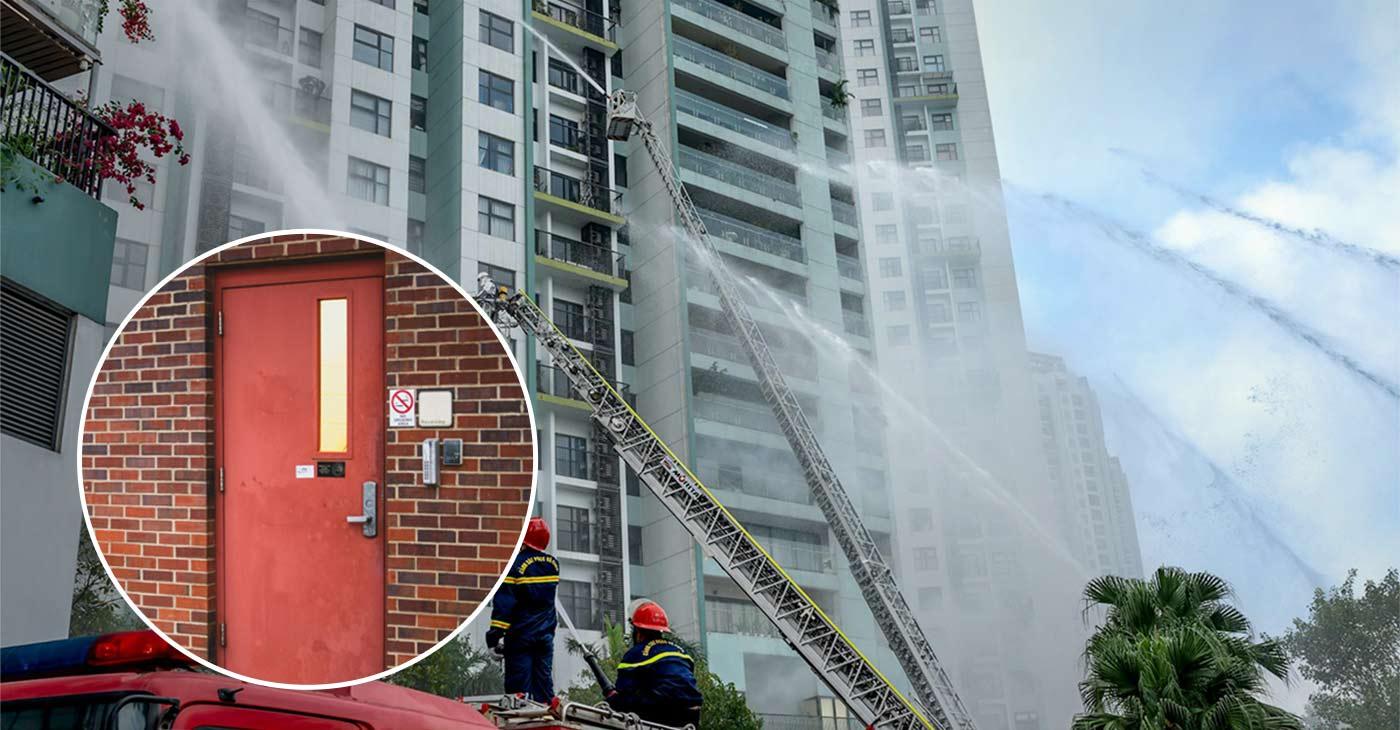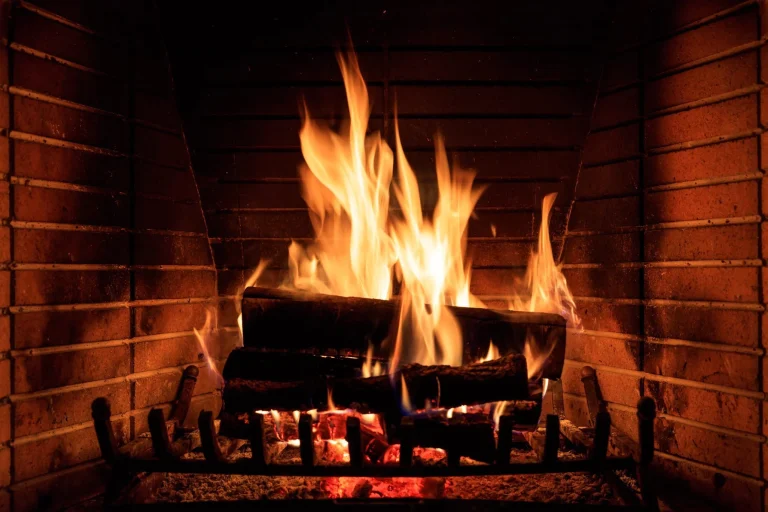What’s the Fire Door Label Requirements in The Eu?

Table of Contents
Fire safety corresponds to the fire door label requirements of building design and development, especially in the European Union (EU) where legitimate guidelines aim to safeguard lives and property.
Fire doorways play a fundamental part in preventing the spread of fire and smoke inside structures, providing tenants with a critical chance to evacuate safely.
To ensure the effectiveness of fire doorways, specific labeling necessities are commanded across the EU. This article investigates the significance of fire door labels, the guidelines administering them, and the requirements of these labels.
Fire door labeling
Fire door labeling is a basic part of fire safety measures in buildings. These labels give fundamental data about the presentation and abilities of fire doorways, helping tenants and emergency responders during fire episodes.
Key data typically included for fire doorway labels incorporates the door resistance to fire, compliance with testing principles, manufacturer details, and other appropriate information.
The fire resistance rating demonstrates the term for which a fire door can endure exposure to fire and prevent the spread of flames and smoke. Consistent with significant testing principles, like EN 1634 in the European Union, ensure that fire doorways have gone through thorough testing to confirm their capacity to endure fire conditions.
Manufacturer details, including the name, address, and contact data, work with accountability and responsibility in the event of inquiries or issues regarding the door’s functionality.
Furthermore, fire door labels might include CE marking, showing similarity with fundamental safety and performance requirements ordered by EU directives and guidelines.
In general, fire entryway marking assumes an urgent part in improving fire safety in structures and guaranteeing that fire entryways capability successfully safeguard lives and property during fire crises.

Intertek fire door labeling
Intertek labeling implies that fire door label requirements have gone through rigorous testing and assessment by Intertek, a main testing, review, and confirmation organization.
This naming guarantees building proprietors, project workers, and administrative specialists that the fire door satisfies regulations and conforms to pertinent guidelines. Intertek conducts thorough testing to evaluate the fire door’s capacity to endure fire and prevent the spread of flares and smoke.
This testing assesses different variables, including imperviousness to fire, primary respectability, and smoke control capacities, ensuring that the doorway gives successful safety in case of a fire.
Fire entryways bearing the Intertek name give genuine serenity to partners, as they can confide in the door’s reliability and execution.
The mark regularly incorporates significant data, for example, the r fire resistance rating, testing standard principles, and manufacturer details, considering simple distinguishing proof and confirmation of the door’s certification.
Overall, Intertek marking upgrades fire safety in buildings by confirming that fire doors meet rigid quality and execution norms, adding to the assurance of lives and property during fire crises. Building owners and specifiers without hesitation select Intertek-certified fire doors realizing that they have gone through intensive testing and meet laid out safety measures.
Passive fire protection labeling
Passive fire protection labeling is a basic part of fire safety measures in structures. It includes the identification and labeling of passive fire insurance systems and parts, including fire doors, fireproof walls, floors, and roofs, as well as fire-rated ductwork and obstructions.
The labeling typically incorporates significant data, for example, the resistance to fire, testing guidelines consistency, and producer subtleties. This permits building tenants, examiners, and emergency responders to easily identify passive fire protection measures and discover their adequacy in containing flames and restricting the spread of smoke and intensity.
By meeting fire door label requirements, partners can guarantee that these basic components are appropriately introduced, kept up with, and assessed as per administrative prerequisites. This adds to a more secure fabricated climate by upgrading the general resistance to fire and regulation capacities of structures, subsequently safeguarding lives and property in case of a fire.

Regulations governing fire door labels and requirements in the eu
Construction products regulation (CPR) standards
In the EU, fire door labeling prerequisites are administered by different guidelines and principles to guarantee consistency and unwavering quality across member states.
One of the essential administrative structures for fire safety in structures is the Construction Products Regulation (CPR), which lays out blended principles for development items, including fire doors.
Under the CPR, fire door labeling should consent to the European Standard EN 16034, which covers heatproof and smoke control entryway assemblies. This standard determines the testing methodology, execution criteria, and labeling requirements for fire doors planned for establishment in buildings inside the EU.
Fire door certification
Fire door certification is a conventional interaction by which fire door label requirements are followed and go through rigorous testing and assessment to guarantee consistency with laid-out guidelines.
The certificate confirms that a fire entryway meets explicit execution standards connected with imperviousness to fire, smoke regulation, and other safety measures. In the European Association, fire entryway confirmation includes adherence to the Construction Products Regulation (CPR) and consistency with the European Standard EN 16034.
This accreditation cycle involves testing fire entryways under controlled conditions to evaluate their capacity to endure fire and forestall the spread of flares and smoke.
Also, in the US, fire entryway certificates are directed by associations like Underwriters Laboratories (UL) and Intertek, which assess fire entryways for consistency with guidelines like NFPA 80.
Certificate marks from these associations show that a fire entryway has met severe testing prerequisites and can be depended upon to give compelling fire security in structures. Generally speaking, a fire entryway certificate assumes an imperative part in guaranteeing the dependability and execution of fire entryways, adding to improved fire well-being in structures.
Fire door label requirements
Fire resistance rating
The resistance to fire demonstrates the term for which a fire doorway can endure exposure to fire and prevent the section of flames and smoke. Normal ratings incorporate 30 minutes, an hour, an hour and a half, and 120 minutes, depending upon the door’s construction and materials.
Fire Door Testing Standard Compliance
Fire door labels ought to show consistency with significant testing guidelines, for example, EN 1634, which assesses the resistance to fire execution of doorway and shutter assemblies. This guarantees that the door has gone through proper testing to check its capacity to endure fire conditions.
Fire Door Manufacturer Specifications
Fire door labels should incorporate fundamental data about the producer or provider, including their name, address, and contact subtleties. This considers accountability and responsibility in the event of requests or issues in regard to the door’s performance.
Smoke and Draft Control Door Labeling
Smoke and draft control door labeling is vital for fire door label requirements, especially intended to restrict the spread of smoke and drafts inside a structure during a fire episode. These names pass fundamental data about the door’s ability to forestall the section of smoke and wind stream, supporting the insurance of tenants and property.
The labeling normally incorporates insights regarding the door’s compliance with pertinent principles and testing techniques, as well as maker data. Clear and exact naming guarantees that smoke and draft control entryways are effectively recognizable and contribute actually to fire security estimates in buildings.
Ce Marking
The CE marking is a mandatory requirement for fire doors placed in the EU. It demonstrates that the product complies with the EU orders and guidelines, including the CPR. The CE mark on a fire entryway label means similarity with fundamental security and execution prerequisites.
In addition to fire doors, CE marking is also significant for other types of doors such as security doors, emergency exit doors, and acoustic doors. For security doors, the CE mark assures that the door meets EU standards for resistance to break-in attempts and is effective in securing premises against unauthorized entry. Emergency exit doors with CE marking are designed to facilitate safe and rapid evacuation from buildings during emergencies, ensuring they comply with safety exit strategies and regulations. Similarly, acoustic doors with CE marking meet specific sound insulation levels, providing necessary soundproofing in environments requiring noise control such as schools, hospitals, and office buildings. Read more at Beslagsguiden.
Additional Information
Depending on national guidelines and principles, fire door labels might incorporate extra data, like establishment directions, upkeep necessities, and significant certification marks from notified bodies.

Fire door inspection criteria
Fire door inspection criteria are fundamental rules for fire door label requirements, surveying the condition, usefulness, and consistency of fire doors in building structures. These standards frame the particular angles that inspectors ought to assess to guarantee that fire doors are capable of containing flames and smoke, thereby safeguarding tenants and property.
Key inspection measures commonly incorporate checking for any indications of harm, like breaks, holes, or distorting, that might think twice about the door’s integrity. Inspectors likewise confirm the legitimate activity of entryway equipment, including pivots, locks, and shutting gadgets, to guarantee that the entryway can close safely in case of a fire. More information about door locking equipment is available at Spanjolett.com.
Also, inspectors survey the state of fire entryway edges, seals, and coating materials to affirm that they meet administrative prerequisites for resistance to fire and smoke regulation. Customary assessments in light of laid out rules are fundamental for distinguishing and resolving any issues speedily, keeping up with the dependability and adequacy of fire entryways in improving fire safety inside structures.
Building code compliance and requirements for fire doors
Building proprietors, contractors, and specifiers should guarantee that fire door label requirements introduced in their structures agree with the material marking prerequisites. This includes acquiring fire entryways from trustworthy makers or providers who give items legitimate labeling and certificates.
Moreover, appropriate installation and maintenance of fire entryways are pivotal to keeping up with their viability after some time. Fire door assemblies should be introduced by qualified experts as per manufacturer guidelines and important construction laws. Normal assessments and upkeep strategies ought to be led to recognize any issues or harm that might think twice about the door’s integrity.
Summary – Fire door label requirements in EU
Fire door label requirements in the European Union are intended to improve fire safety in buildings and shield occupants from the risks of fire and smoke. By sticking to administrative norms and guaranteeing legitimate labeling, building owners and partners can add to a more secure constructed climate.
Understanding the vital parts of fire door labels and ensuring compliance with relevant guidelines are essential to protect the buildings from potential harm and risks of fire in emergencies throughout the EU.






